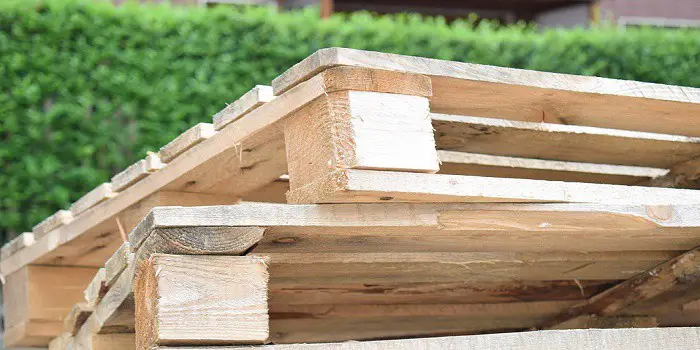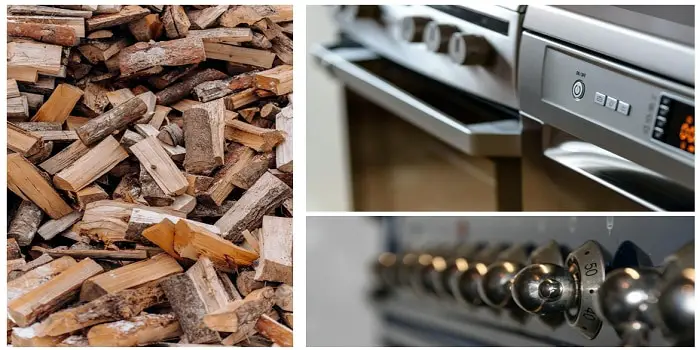
Today, wood bending is most often used to create wooden instruments along with popular home décor items, including toys and crafts.
And to successfully bend the wood, boiling is used as one of the most preferred methods.
So, the short answer is yes, you can bend wood by softening it first by boiling it in water.
In fact, it has been done for many thousands of years without using any other special equipment or tools.
With that said, if you are planning to boil and bend wood in your home, there are many factors that can change the flexibility or bendability of wood – like how long you are boiling or soaking the wood, what type of wood it is, how hot the water you need to bend the wood and many others.
Below in this comprehensive guide, I will try my best to answer all these questions and more…
What Happens to Wood if You Boil it?
The water that is inside the wood will begin to increase.
Increasing the amount of moisture inside loosens the wood fibers, so they become more flexible.
The heat from boiling allows for moisture to enter the wood itself.
Simply soaking it in cold water is not going to work.
The heat from the boiling water will also change the color of the wood, similar to the natural weathering process.
Plus, once the wood cools down, it will retain much of the water that it had absorbed when the heat was being applied.
After one to three hours of boiling the wood in water, it should become fully pliable or bendable.
You can achieve the same effect on wood by pouring boiling water over it every few minutes.
The thinner the wood, the faster it will become pliable.
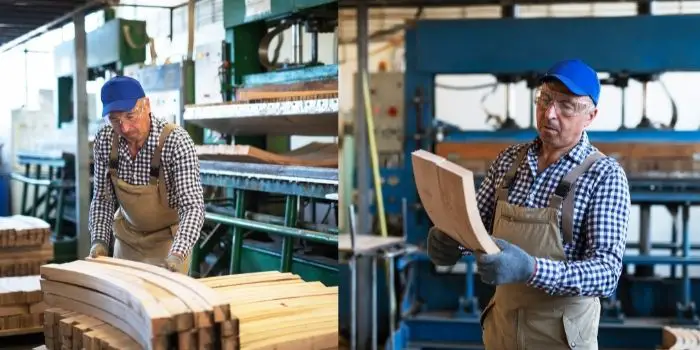
What is the Best Wood Type for Bending?
When bending wood, keep in mind that not all species of wood are easily bendable.
There are species of wood that can bend much easier than others, and you will need to choose those.
Basically, it’s all about the grains – the more open the grains are, the easier they can be softened and bent. This is because hot water or steam can penetrate the open pores more easily in such wood.
The most flexible woods that can easily be bent include white oak, red oak, ash, and beech.
Species like pines, firs, cherry, maple, and other tropical hardwoods are not as elastic and would be harder to bend or get curved.
When choosing bendable wood, you should note that woods with high moisture content (like freshly cut green wood) can also sometimes be bent without water or much extra force.
Also, you can see a change in color (when bent) in certain species, which is usually due to the tannin content of the wood.
How to Boil Wood for Bending without Breaking?
Now that you know the basic process, the next step is to apply it so you can bend the wood without breaking it.
Below are the steps to bend wood with boiling water…
Step 1:
Fill up a large container with water.
The container must be large enough to hold the wood you want to boil and to withstand the heat that will be applied.
Step 2:
Put the wood into the container and make sure it is fully submerged.
Place the lid on top of the container.
Step 3:
Set the container or pot on the stove and turn it up to high heat.
For every half-inch of wood, boil for a half-hour.
Step 4:
Remove the wood at the required time.
Be sure you are wearing thick leather gloves to protect your hands from the heat. Now you can bend the wood as you desire.
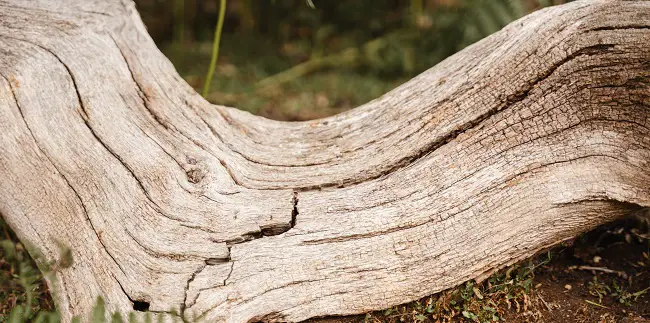
Can You Bend Wood By Soaking or Steaming it in Water?
Yes, you can use one of the two methods or both to soften wood for bending.
Let’s get into the detail about each…
Soaking to soften the wood
One popular method is to create a trough – large enough to hold and soak the wood.
- Place the wood in this trough and then fill it with boiling water.
- Once the water has been applied, cover the trough with thick strips of canvas or use old blankets if that is what you have available. This will keep the water hot for the longest time.
- Every few minutes, pour more boiling water on top. Depending on the thickness of the wood, it should take one to three hours for the wood to become pliable.
Steaming to soften and bend wood
Using steam instead of boiling water may be easier for wood to bend.
- Start by wrapping heavy aluminum foil around the wood and crimping one end shut.
- Then, add boiling water to the other end and crimp it shut.
- Now, place the wood over a hot plate or charcoal grill and heat the wood so that the water inside the foil turns to steam.
Remember that you can tilt up the wood to only heat the bottom end. This will create steam inside the foil, which will reach the entire length of the wood.
Once the wood is ready, you should have a bending form ready to bend the wood into the desired shape once it has been removed from the heat.
The rig that you make can be from blocks of scrap wood that are fastened to a supporting board.
This means you can place the boiled or steamed wood into the form and let it cool and dry to harden.
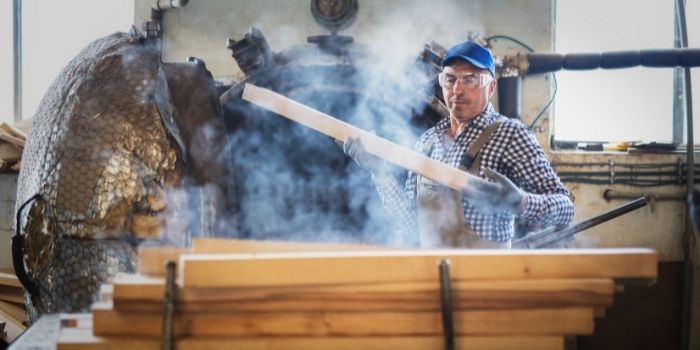
Also, keep in mind that clamps will be required to keep the wood inside the bending form.
Because your hands will come into contact with the heated wood, it is best to wear heavy gloves that offer good thermal protection.
This allows you to hold the wood and bend it into the form so it can assume the shape you desire.
Once the wood is clamped into the form, it should be dried for at least 24 hours before you take away the clamps.
Once dried, the plasticized wood will assume a new shape. Although, there might be a slight spring that occurs when you pull the wood from the form.
At what temperature can you bend wood?
With steam, you will need approximately 200 degrees F to 212 degrees F to soften and bend the wood at normal atmospheric pressure.
When using water, always use hot water (and not warm or cold water) to get better results and desired shape.
How long do you have to soak wood to bend it?
For softening and then bending the wood with water, it’s recommended that you soak the wood piece in water for at least one to three hours.
This will depend on the type of wood you are using, its thickness, its moisture content, and how elastic it is.
For example, a piece of wood with 2.5 cm thickness and moisture content not greater than 20% may take about an hour to boil or steam the wood.
Typically, this time will increase as the thickness and dryness of the wood increase.
What Other Methods Can You Use for Bending Wood without Water?
Projects such as building baskets, musical instruments, and furniture with graceful curves often require softening and bending the elastic wood.
This is not only possible by water, but there are a few other methods as well that can help bend the wood without hot water.
Some of the most common ones include:
a) Kerf Cut
Kerf cut bending is the process in which cutting is done across a wood piece to make several slots, which allows the wood to bend easily.
Basically, you are making the part of wood thinner by kerfing and making the cuts that make the wood flexible and easy to curve.
The beauty of the process is it can be employed with any type of wood, whether it’s soft or hard (not very flexible).
With the advantage there are also a few disadvantages of this wood bending method:
- It weakens the wood piece
- It is not suitable for structural parts
- It cannot be easily done at home and needs certain skills
- Cuts and bent parts need to be covered up with a sheet-like laminate
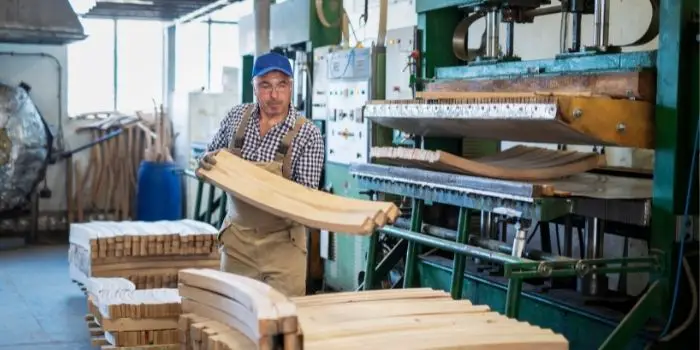
b) Chemical Impregnation
With strategical chemical impregnation, “lignin” bonds between the wood fibers can be destroyed, which then softens and bend the wood easily.
You can do this at your home with ammonia, but make sure you follow all safety rules because ammonia can be dangerous if not handled carefully.
In a well-ventilated room, prepare yourself with gloves.
Then in a plastic or glass container, prepare a 25% aqueous solution of ammonia and soak the wood piece in it.
Close the container tightly with a lid and allow it to sit for a few hours.
The longer the wood is soaked in the ammonia solution, the more elastic it gets for making the wood in a curved form.
The drawback to this process is – its many times is not permanent. This means, depending on the species of wood, the wood fibers can sometimes gain their strength after some time, and the wood piece can retain its shape.
c) Using Glued Laminated Wood
This is another common method to bend the wood in which specific types of thin laminated wood pieces are glued together to get the curves and special patterns.
Unlike the chemical method, this is typically a more durable method where the structure formed is strong.
Final Thoughts
And that’s all about how you can bend wood with and without using water.
Remember, if using water for bending wood, you should always use hot water or steam (and not cold water) to increase the elasticity of wood faster.
These ancient processes will allow you to bend the wood into the types of shapes you want.
Plus, the wood itself will retain its inherent strength and durability if you follow the process and do it correctly.

Hi, I am Mark Garner a professional carpenter, woodworker, and DIY painter. I live in the small city of Peoria, Arizona as a semi-retired woodworker. I have started this blog with a simple motive to help you with my wood experience in this sector. If you like to know more about what I love doing and how it all got started, you can check more about me here.

